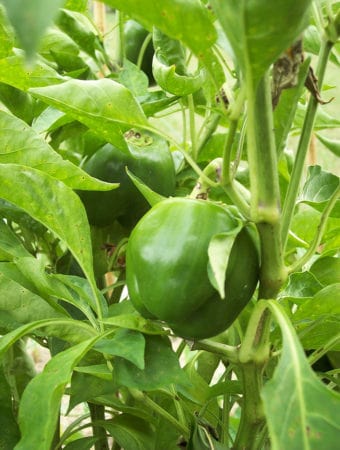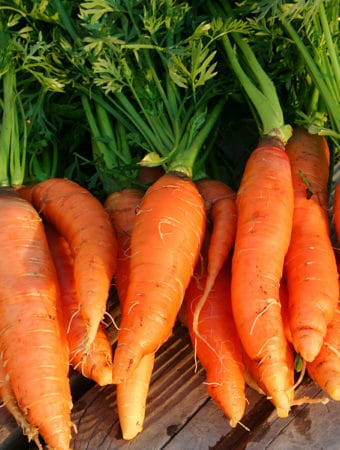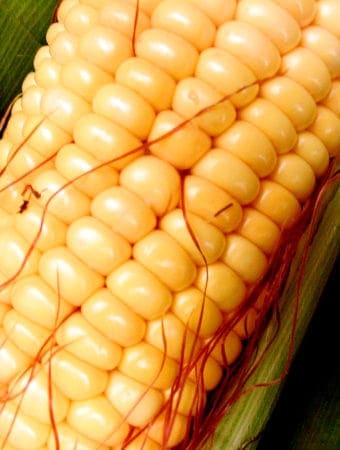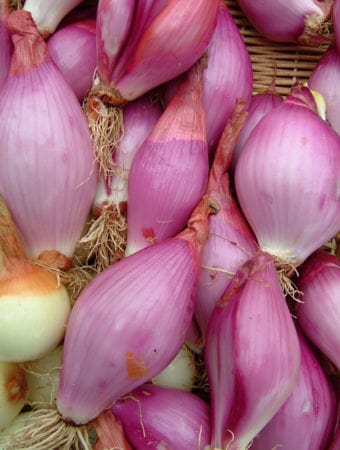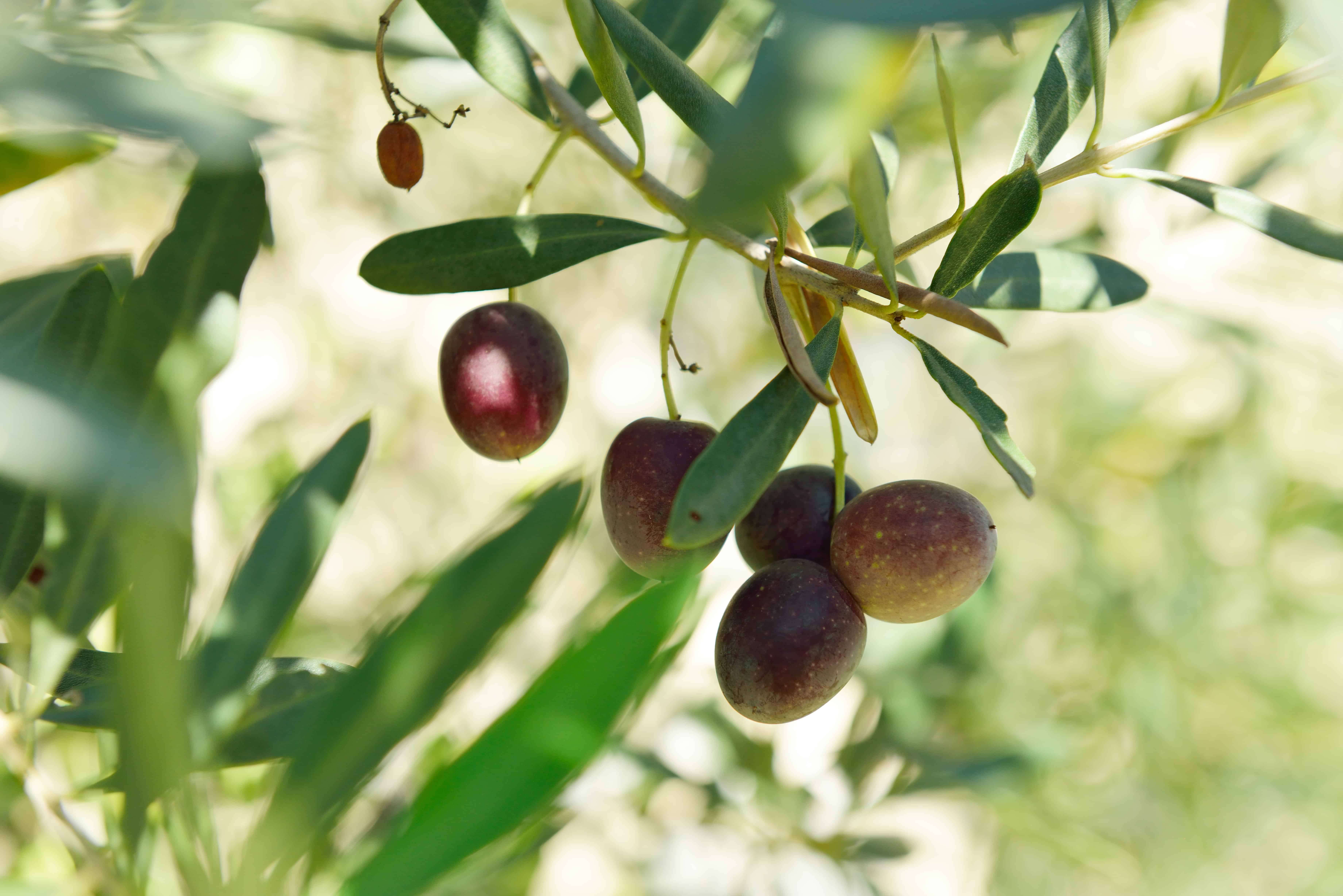
Olives grow best where summers are long, hot, and humidity is low. They are easy to grow and care for.
There are dozens of olive varieties, the fruit varying slightly in size, shape, and flavor.
Olives are too bitter to eat raw. They are either cured for table serving or pressed for cooking oil.
The difference between green olives and black olives is simple. Black olives are harvested ripe. Green olives are harvested unripe. Both have a tangy, salty flavor after being cured.
Here is your complete olive growing guide.
Best Climate and Site for Growing Olives
- Olives grow best where summers are long, hot, and humidity is low.
- USDA Zones 9 and 10 have optimal growing conditions for olives.
- Olives need some winter chill to produce flowers; mid-winter temperatures between 40° and 50°F are ideal; that said an olive tree can withstand freezing temperatures but will be killed at temperatures below 12°
- Grow olives in full sun.
- Plant olives in well-drained soil; sandy loam is best, but olives will adapt to most soils. Olives grow best when the soil pH is in the range of 5.5 to 8.5.
- Grow olives away from prevailing breezes or winds. Avoid planting olives in a low spot that collects cold air or frost.
- Avoid planting olives where fallen fruit will stain walkways or patios.
Choosing the Right Olive Plant
- Some olives are best for oil, others for fruit—pickling and preserving. Choose a variety suited for your needs.
- Contact the nearby Cooperative Extension Service for varieties that will grow well in your area.
Spacing Olives
- Olives can grow 15 to 30 feet tall and wide; they can be trained and pruned to a smaller size.
- Space standard olives about 20 feet apart.
Olive Pollination
- Most olives are self-fruitful; however, they are more likely to flower and set fruit if pollinated by another olive growing nearby.
 Planting Olives
Planting Olives
- Plant olives in spring or fall; avoid planting olives during hot, dry summer weather.
- Prepare a planting site in full sun that is sheltered from a prevailing breeze or wind.
- Work well-rotted compost or manure into the soil.
- Dig a hole half again as deep and twice as wide as the tree’s roots. Add a cupful of all-purpose fertilizer to the bottom of the hole.
- Put a tree stake (or support wires for a fan) in place before planting. Drive the stake into the ground to the side of the hole to at least 2 feet deep.
- Set the plant in the hole so that the soil mark from the nursery pot on the stem is at the surface level or an inch or two deeper than the surrounding soil. (If you are planting a balled-and-burlapped tree, remove all twine and burlap from the planting hole.) Spread the roots out in all directions.
- Re-fill the hole with half native soil and half aged compost or commercial organic planting mix; firm in the soil so that there are no air pockets among the roots. Water in the soil and create a modest soil basin around the trunk to hold water at watering time.
- Secure the tree to the stake with tree ties.
- After planting, water each tree thoroughly and fertilize with a high-phosphorus liquid starter fertilizer.
Container Growing Olives
- Olives can be grown in containers.
- Choose a large pot or tub at least 18 inches wide and deep that is well-drained.
- Plant trees in a commercial organic potting mix.
- Keep the soil evenly moist but not wet.
- Feed olives growing in containers with an all-purpose fertilizer that is slightly higher in potassium.
- Repot the tree after two years into a container that is 24 inches wide and deep.
 Olive Care, Nutrients, and Water
Olive Care, Nutrients, and Water
- Olive trees need regular water until roots are well established. Mature trees will tolerate periods without much water, but they will benefit from regular water when buds and blooms are developing.
- Fertilize olive trees annually with a few cups of nitrogen such as blood meal or cottonseed meal. Avoid over-fertilizing an olive tree or too many fruits will set.
Training Olives
Olive trees are best trained to an open center. Here’s how:
- At planting, starting with a whip, cut off the central leader with an angled cut just above a bud at about 5 feet high. If the seedling has lateral branches, remove any laterals lower than 18 inches; prune back remaining laterals by half.
- During the first summer, cut back main laterals to about 8 inches from the start of this year’s growth; cut to buds that face outward; cut back new shoots or lateral to about 6 inches; leave the central leader untouched.
- The second spring after planting, cut back the central leader to about one-third of last year’s growth.
- In the following springs: cut back the central leader by two-thirds of the last year’s growth until it reaches the maximum desired height. Cut out any dead, damaged or diseased wood. Remove old, unproductive growth to clear congestion at the center of the tree. Tip prune the central leader to about 1 inch of the previous year’s growth.
Maintenance Pruning and Thinning Olives
- Prune established trees for shape and to keep them from growing too large; remove spindly branches.
- Prune out dead, damaged or diseased wood; thin congested wood so that sunlight and air can get to the center of the tree.
- Thin fruit by removing excess fruit individually. Thin until there are about three or four fruits per foot of twig. The fruit size or remaining fruit will be increased by thinning. Thin fruits as soon as possible after fruit set.
Propagating Olives
- Olives can be propagated by hardwood or softwood cuttings. Start softwood cuttings in the fall.
- Olives cultivars are often grafted onto a rootstock.
 Harvest and Storing Olives
Harvest and Storing Olives
- Olives bear fruit four to five years after planting.
- Olive trees are alternate bearing: under normal conditions, they produce heavy crops one year and a light one the next.
- Olives can be harvested either green (unripe) or black (ripe). For table fruit, harvest when the fruit is still green, just before the fruit turns the color of yellow straw, or when ripe and black. For oil, harvest when the fruit has turned black on the outside, but the flesh is still green/yellow.
- Pick by hand to avoid bruising when picking olives that will be picked for table use. Olives that will be used for oil can be knocked from the tree; hit the tree branches with a pole and then gather the fallen olives.
- Olives can be pickled green. Olives can be brined or canned for storage.
- All olives must be cured before they can be eaten. Table olives are cured with water, oil, brine, salt, or lye to dissipate their bitterness and to preserve them.
Olive Problems and Control
- Olive knot disease is a bacterial disease that appears as swellings or galls; cut out the gall in summer to prevent the disease from spreading; remove two inches or more in diameter around the gall.
- Peacock spot fungal disease occurs in years with above-average rainfall; the infection appears on leaf blades and can lead to premature fruit drop. Apply copper fungicide in fall before winter rains begin to control peacock spot.
- Scale is an insect with an elliptical shell that sucks sap from leaves and stems. Smother scale with horticultural oil or crush the insects.
- Verticillium wilt is a fungal disease that will cause leaves to discolor and curl; it can spread to other parts of the tree and can cause tree death in a few years. Remove diseased leaves and place them in the trash.
- Rake up and destroy any leaves of fruits that show signs of disease.
Fall and Winter Olive Care
- Place a thick layer of composted manure around trees in fall; winter rains will carry nutrients deep into the soil.
- Protect olives from freezing weather by covering plants with burlap or blankets.
Olive Varieties to Grow
- ‘Ascolano’: large fruit with a small pit; good oil content but less than ‘Mission’ and ‘Manzanillo’; tender fruit; good for processing.
- ‘Manzanillo’: larger fruit than ‘Mission’; fruit ripens earlier; average oil content.
- ‘Mission’: medium-size fruit, blue-black when ripe; average oil content; greater cold resistance than other varieties
- ‘Sevillano’: the largest fruit with least oil; the flesh has a woody texture.
Also of interest:



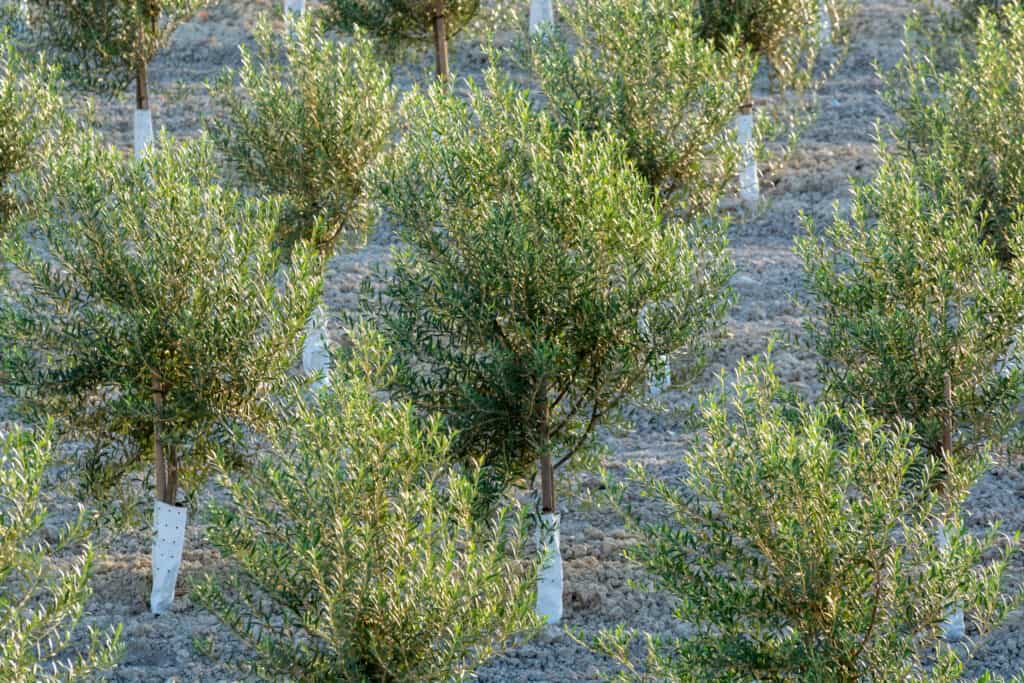 Planting Olives
Planting Olives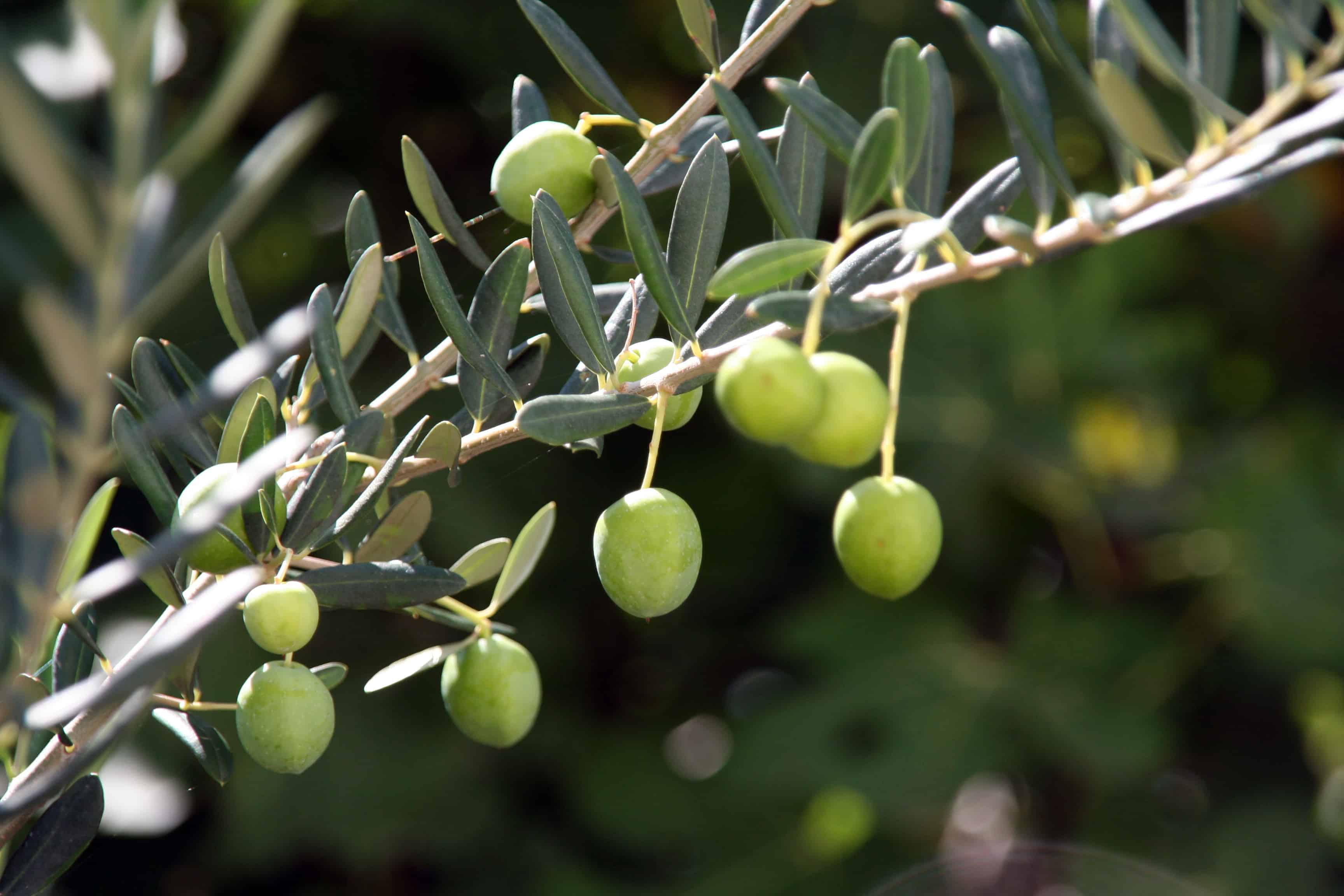 Olive Care, Nutrients, and Water
Olive Care, Nutrients, and Water Harvest and Storing Olives
Harvest and Storing Olives
